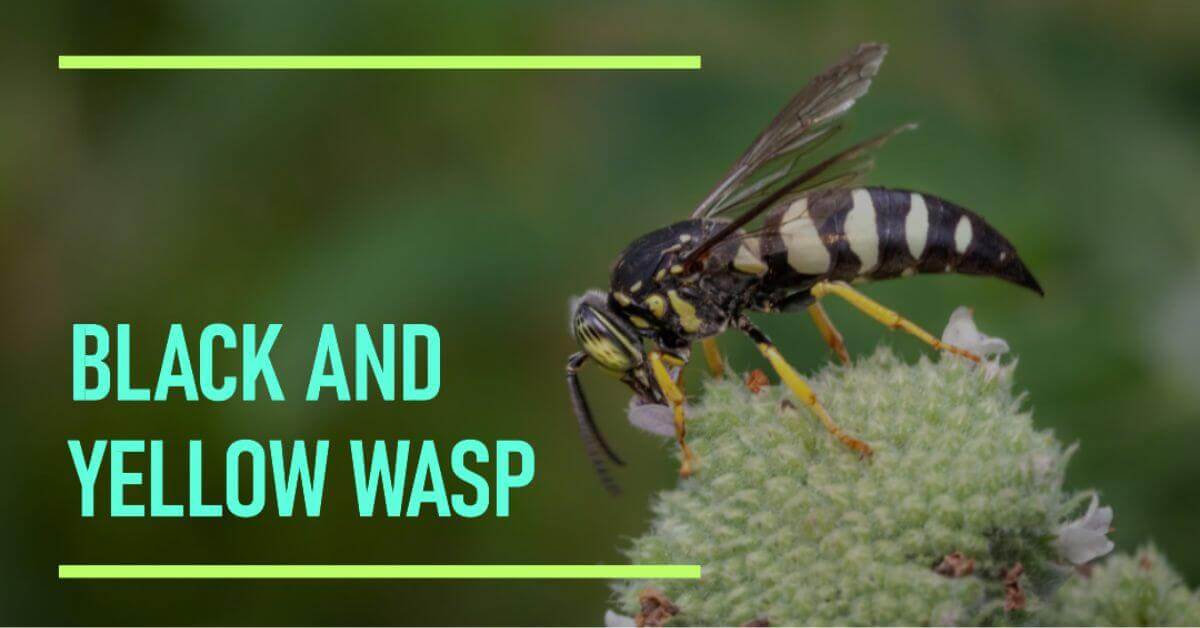Black and yellow wasps, with their vibrant colors and distinct markings, often captivate our attention. These remarkable insects contribute to the ecosystem by pollinating plants and controlling pest populations. In this article, we’ll delve into the intriguing aspects of black and yellow wasps, including their stings, potential danger, and the diversity within this fascinating group.
Black and yellow wasp sting
One notable characteristic of black and yellow wasp is their ability to sting. Wasps possess a specialized structure called the ovipositor, which they use primarily for injecting venom into prey and defending their nests. When threatened, wasps may sting humans, causing a sharp and painful sensation. However, it’s important to note that not all wasp species are aggressive towards humans, and stinging is typically a last resort in self-defense.
Are Black and Yellow Wasps Dangerous?
The question of whether black and yellow wasp are dangerous depends on several factors, including the species and individual circumstances. While the sting of a wasp can be painful, the level of danger they pose to humans varies. Some species, like the paper wasp, tend to be less aggressive and are more focused on building and protecting their nests. On the other hand, certain species, such as yellow jackets, can be more territorial and may exhibit aggressive behavior if their nest is disturbed.
It’s essential to exercise caution and avoid provoking wasps, especially in the vicinity of their nests. While stings can be painful and lead to localized swelling, severe allergic reactions are rare and affect only a small portion of the population. Those who are known to have severe allergies to insect stings should take extra precautions and consult medical professionals for guidance.
Diverse Species and Behavior
The black and yellow coloration is a common theme among many wasp species, but these insects showcase remarkable diversity in terms of behavior, habitat, and habits. Some black and yellow wasp are solitary and engage in solitary hunting, capturing prey for their offspring. Others, like social wasps, live in colonies and have a hierarchical structure with distinct roles such as queens, workers, and drones.
Small black Wasps with yellow stripes
Small black wasps with yellow stripes are commonly referred to as “black and yellow wasps” due to their distinctive coloration. These wasps belong to various families, including Vespidae and Sphecidae. Their slender bodies and vibrant markings are known for serving as a warning to potential predators about their ability to deliver painful stings when provoked.
Black and yellow Wasp nest
The construction of a black and yellow wasp nest is a fascinating process. Female wasps meticulously gather materials such as plant fibers, wood, and saliva, which they combine to create a papery substance. Bees then mold this material into hexagonal cells, forming the nest’s characteristic honeycomb structure. The natural pigmentation of the materials used in construction results in the alternating black and yellow colors. These nests are strategically built in sheltered locations, such as tree branches, eaves of buildings, or underground burrows, to provide protection from the elements and predators. The hexagonal cells within the nest serve various functions, from nurturing developing larvae to providing storage for food resources like insects and nectar.
Black and Yellow Wasps in Texas
Black and yellow wasps are common in Texas, where they crucially contribute to pollination and pest control. These wasps have a distinctive black and yellow coloration, which warns potential predators. People often spot them buzzing around gardens and flowering plants, where they collect nectar and pollen. In addition to their ecological importance, black and yellow wasp are also fascinating subjects for entomologists studying their behaviour and interactions with other species.
Black and Yellow Wasps in Florida
In Florida, black and yellow wasps are a common sight in gardens, parks, and natural habitats. These wasps contribute to the ecosystem by pollinating flowers and preying on garden pests. Their vibrant black and yellow patterns serve as a deterrent to predators, indicating their potential sting. While some species of black and yellow wasp are solitary and build small nests, others are more social, forming larger colonies. Understanding their presence and behaviour in Florida can provide valuable insights into local biodiversity and ecological balance.
Related Posts:
Black and Yellow Wasps in Arizona
The arid landscapes of Arizona are home to various species of black and yellow wasps. These wasps, with their distinctive colouring, thrive in the desert environment. They assist in pollination, aiding the reproduction of native plants. Beyond their ecological role, black and yellow wasp are important in controlling insect populations. They helping to maintain the delicate balance of the desert ecosystem. Researchers in Arizona are actively studying these wasps to better comprehend their behaviour and contributions to the region’s biodiversity.
Black and Yellow Wasps in Alabama
Black and yellow wasps are an integral part of Alabama’s insect population. Their striking appearance serves as a warning to potential predators about their potent sting. These wasps are known to be beneficial for gardens and agricultural fields. They feed on a variety of insects that can harm crops. In Alabama’s diverse habitats, from forests to urban areas, black and yellow wasp contribute to the local ecosystem’s health by pollinating plants and controlling pest populations. Studying their activities in Alabama sheds light on their vital role in maintaining a balanced environment.
Conclusion
The captivating world of black and yellow wasps unveils a spectrum of behaviour, roles, and interactions. That contribute to the intricate balance of ecosystems across various regions. These vibrant insects, with their distinct coloration and intricate nest-building abilities, play pivotal roles in pollination and pest control. While their stings can be painful, the danger they pose varies among species and circumstances. From the arid landscapes of Arizona to the lush gardens of Florida, black and yellow wasp are essential contributors to their respective ecosystems.


